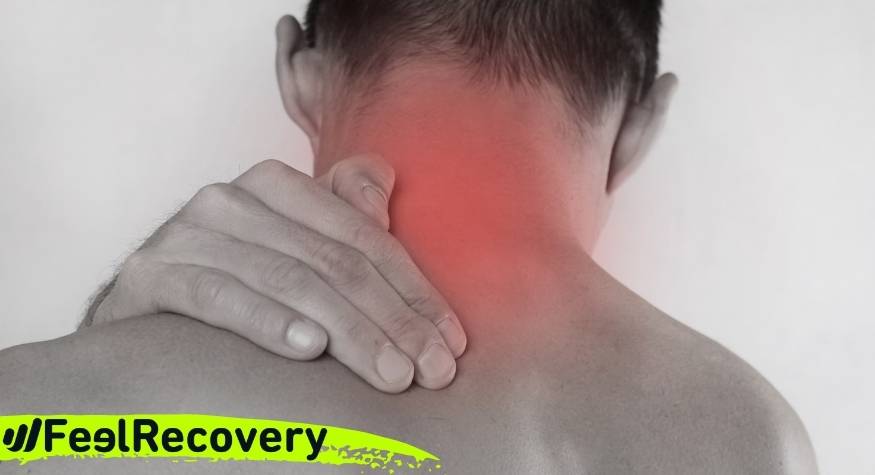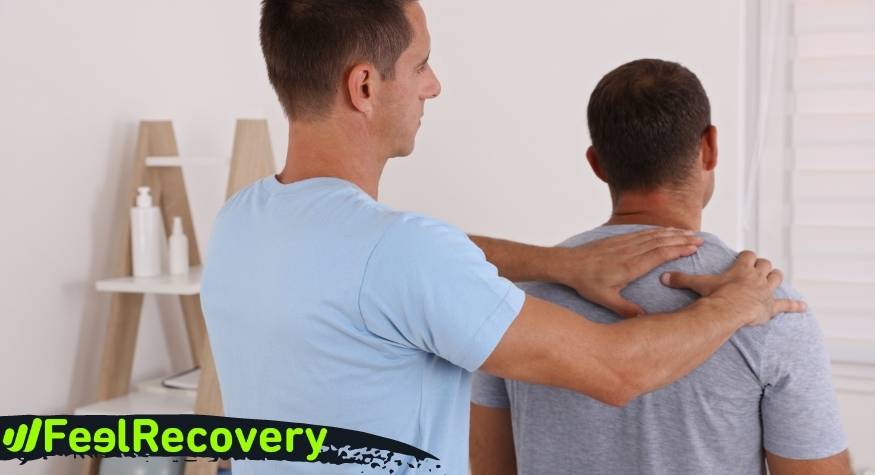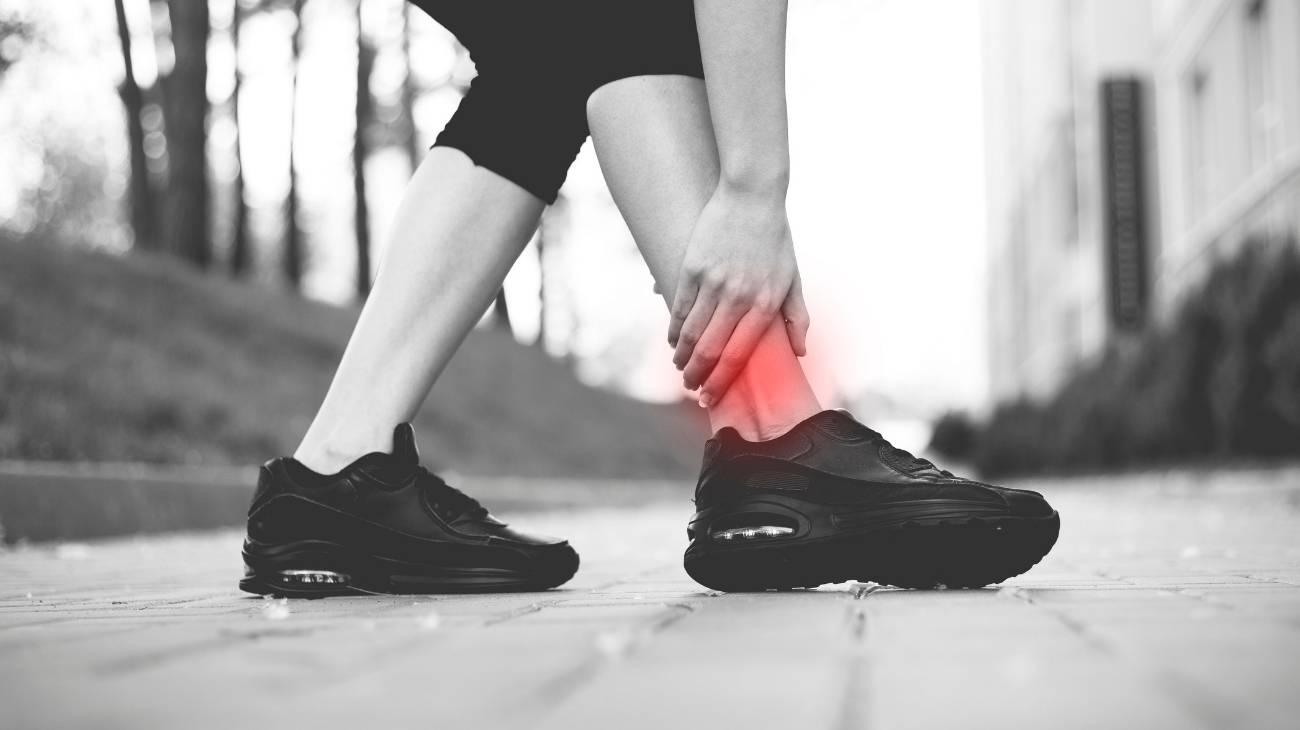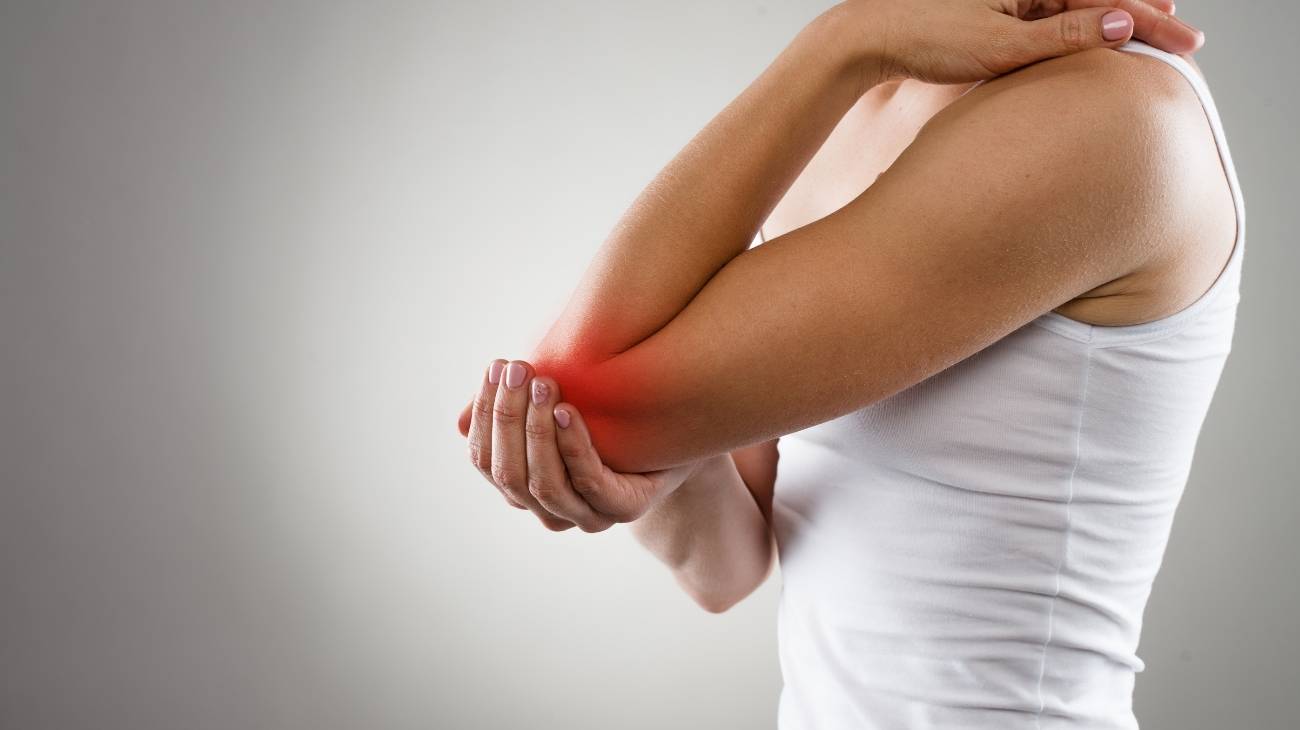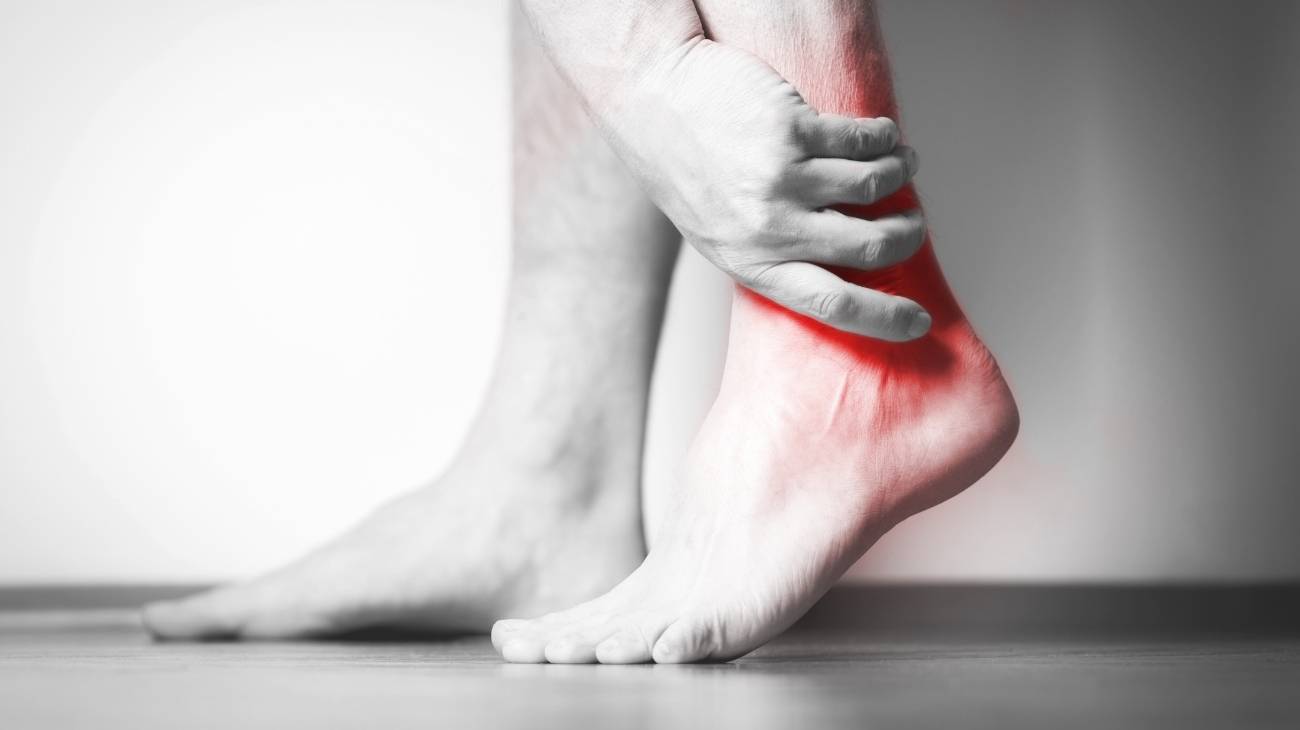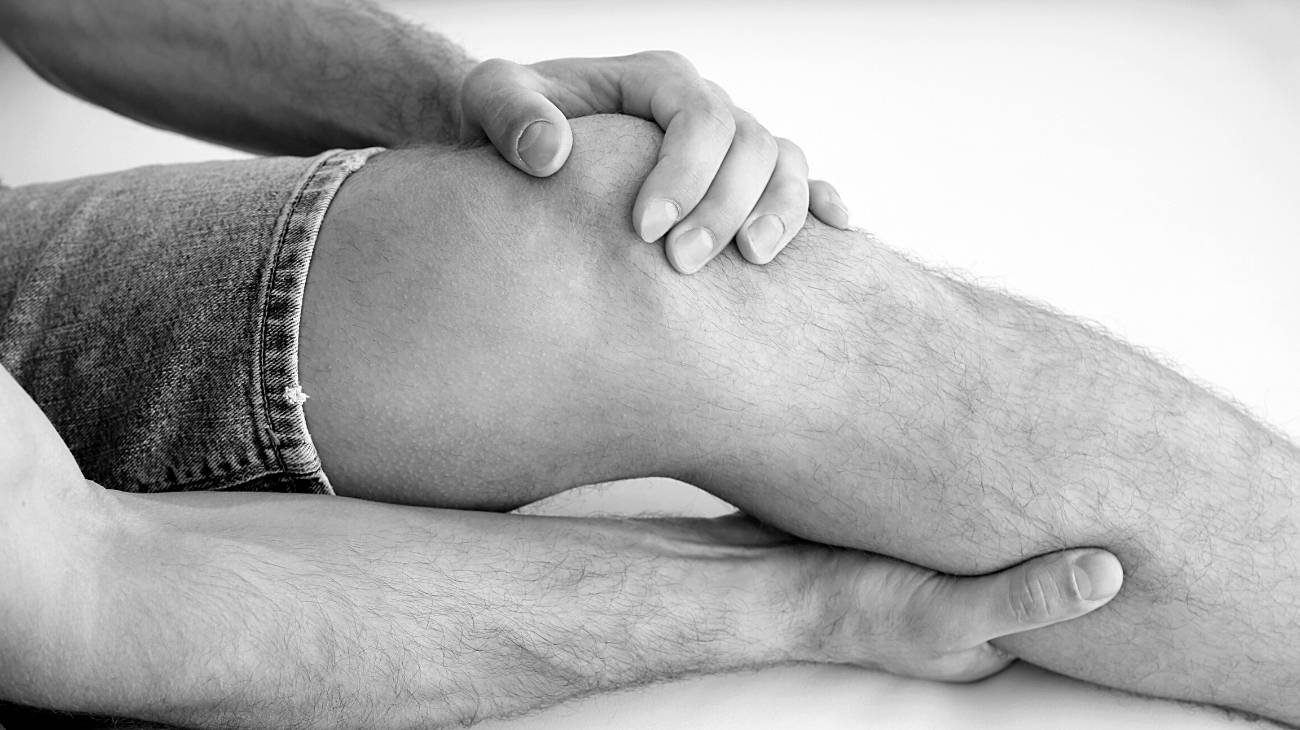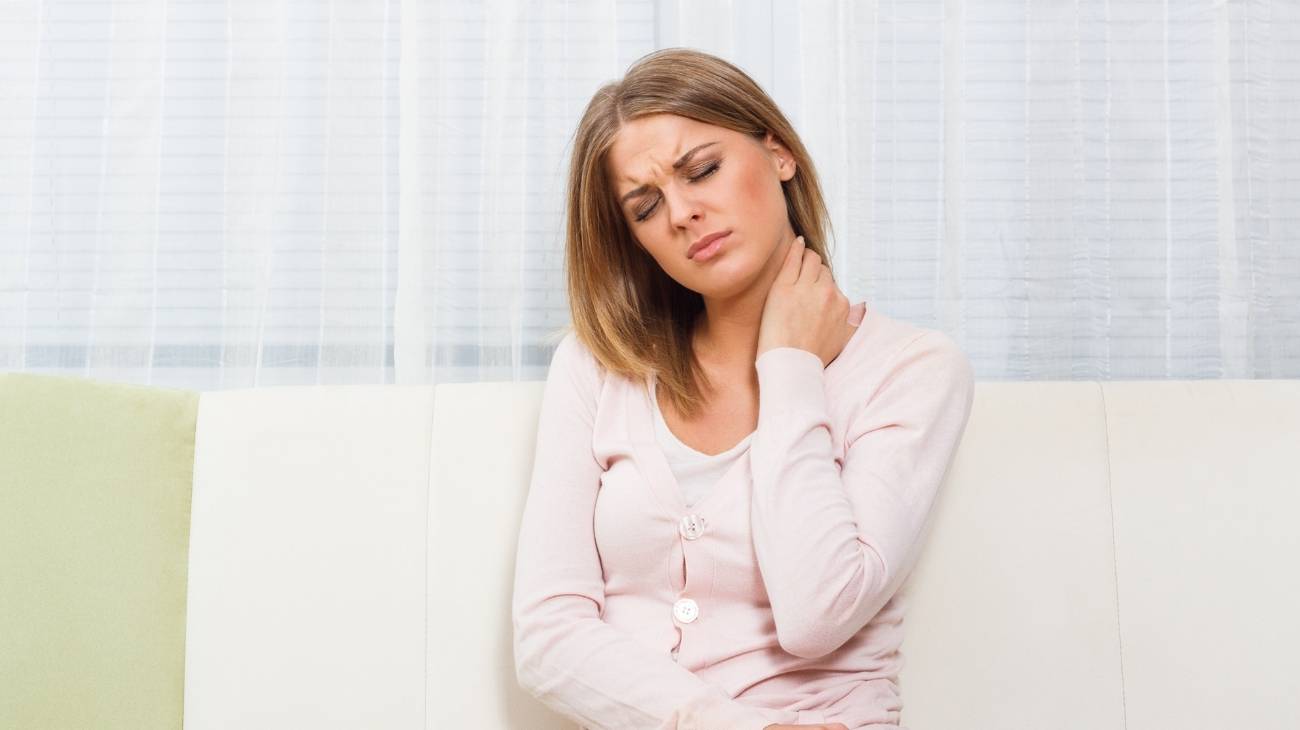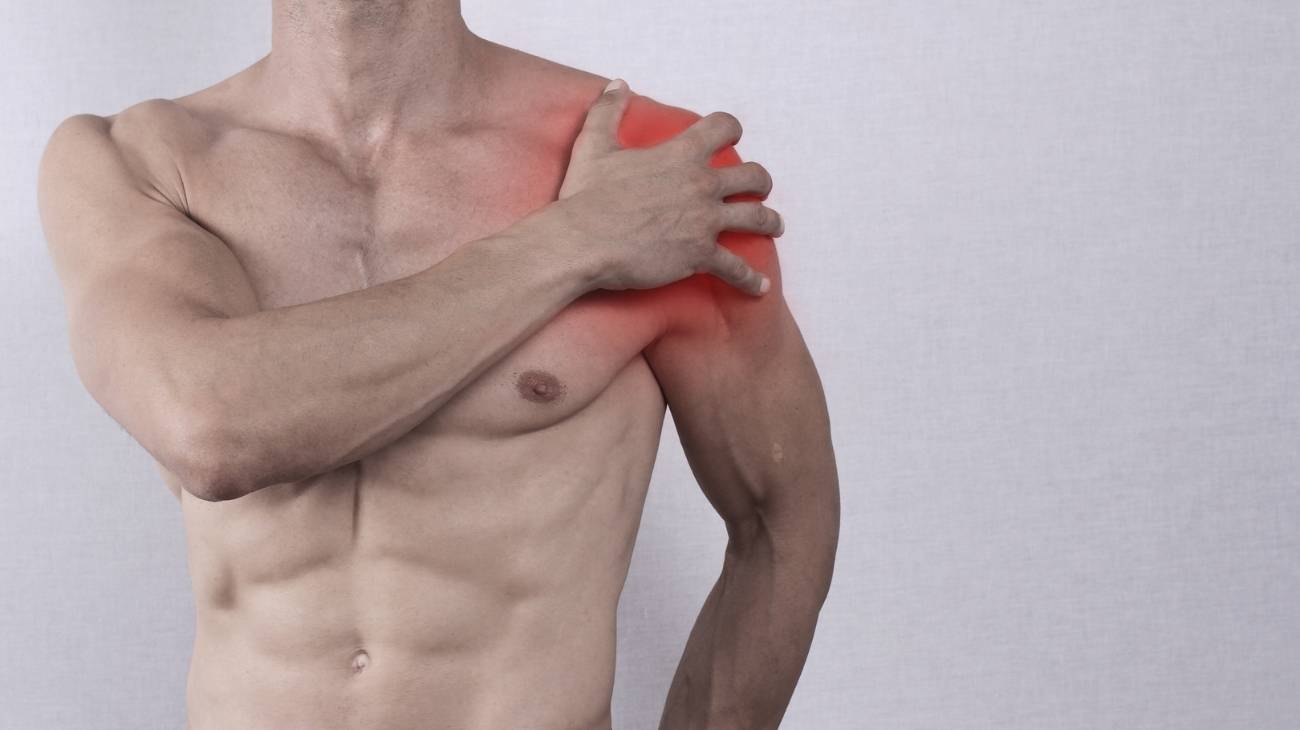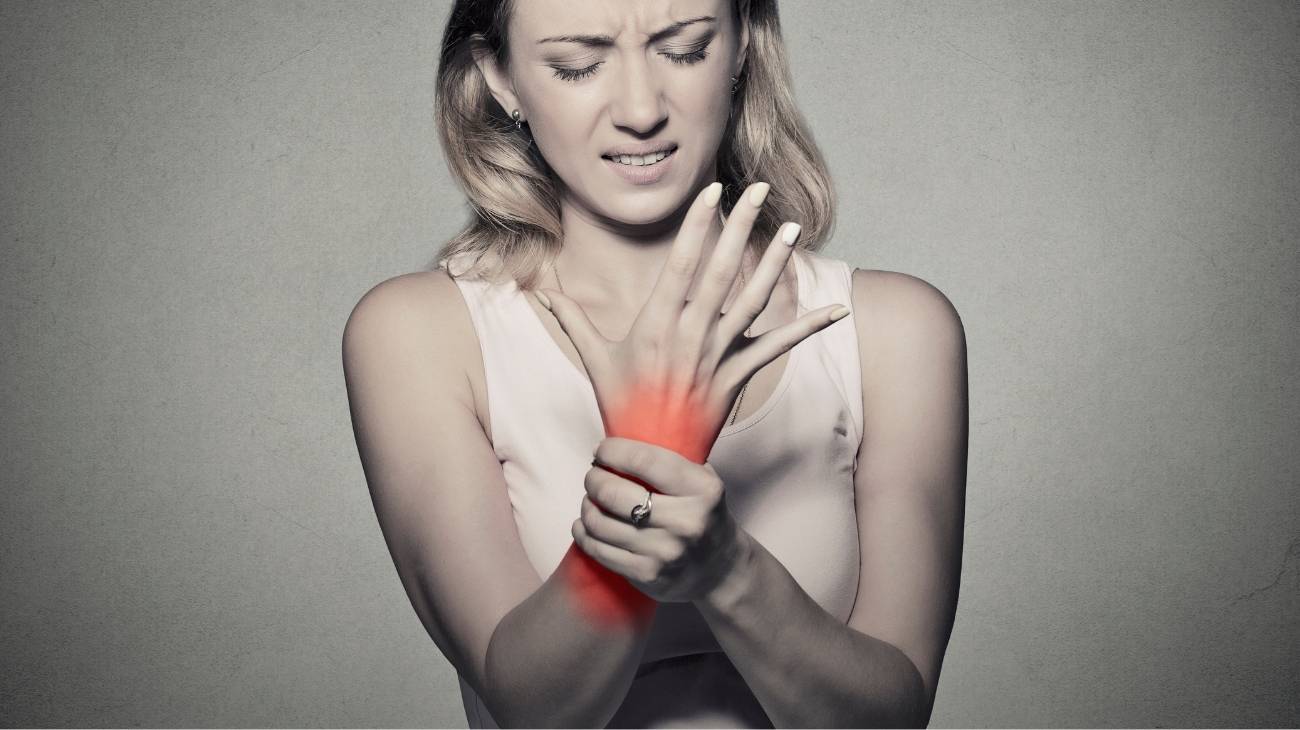- What is a cervical sprain and what degrees are there?
- What are the causes and risk factors for cervical neck sprain?
- Best products for neck sprain
- Main symptoms that warn us that we have a cervical sprain
- What treatments are available to improve the symptoms of a neck sprain?
- Which prevention methods for cervical sprains are the most effective?
When the ligaments that support the bones are stretched more than normal and/or rupture, a joint sprain is caused, which triggers acute pain in the muscles and leads to stiffness in the joint. These can occur in different regions of the body, but one of the most common is a cervical sprain.
In that sense, it is worth noting that this type of sprain causes pain in the neck. But, beyond this, it is important to know what it consists of, what degrees of severity are distinguished, as well as its causes, symptoms, treatments and ways of prevention. You can find all this out here.
What is a cervical sprain and what degrees are there?
Strictly speaking, a cervical sprain is defined as a tear, stretch or injury to the soft tissues located in the neck area, such as the ligaments connecting the cervical vertebrae, tendons and muscles.
These are usually caused by successive, sudden and immoderate flexion and extension, which is described as an acceleration-deceleration mechanism from which energy is transferred to the neck by a sudden, forced movement.
In that sense, it corresponds to a type of sprain that is not considered a serious pathology. But even so, the pain and dysfunction it generates are truly considerable, especially if the impact causes bone or white tissue injuries which, as a consequence, lead to other much more serious clinical manifestations.
Three classes are distinguished and are as follows:
Grade 1
This is considered to be a mild type of sprain that is caused by gentle stretching of the soft tissues in the neck area. In this case, the patient suffers a strain in his ligaments, but does not manifest a rupture of the ligaments. Additionally, because there is no associated joint laxity, the affected person is able to make full movements and only feels mild pain and experiences a mild inflammatory process.
Grade 2
Grade II cervical sprain is characterised by a partial rupture of the ligamentous tissue. This means that the tissues are torn without separation and thus there is a moderate elongation of the soft and bony tissues. Thus, the patient is afflicted by an ailment that becomes more pronounced than in grade 1 and is accompanied by a more noticeable swelling. Musculoskeletal signs also appear and a haematoma may be observed in the impacted area.
Grade 3
This corresponds to the maximum stretching of the neck tissues, which causes the complete rupture of the ligamentous portion and, consequently, produces the total separation of these tissues. As a result, the patient's pain is more intense and throbbing, the neck swelling is prominent, and there is also marked deformity and ecchymosis. In addition, functional impotence of the impacted joint, neurological symptoms, absence or reduction of tendon reflexes, as well as sensory deficits occur.
What are the causes and risk factors for cervical neck sprain?
Undoubtedly, the most typical cause of a sprain in the cervical area of the body refers to the so-called "whiplash" that develops during traffic accidents. In particular, when the impact occurs suddenly from the rear of the vehicle while the muscle is relaxed and does not have the ability to limit or stop the range of motion. A neck sprain manifests itself during the flexion phase and separately, in the extension phase, an overload of the facet joint of the cervical spine is generated.
Below we list the main reasons and risk agents for which a person can suffer from a neck injury of this type:
- Trauma that directly affects the neck: Such as, for example, a blow to the head.
- Sleeping in a position that distends the neck: either very firm or with an extremely high pillow.
- Adopting bad postures for a long time: These include: leaning over a computer monitor, bending over the steering wheel when driving, holding the telephone between the neck and the head, etc.
- Contact sports also cause cervical sprains or whiplash. Since, in many cases, American football tackles and other collisions associated with the sport cause this kind of injury.
- Another reason for a neck sprain is physical aggression or abuse. This is especially true if the athlete is kicked or punched.
- Excessive weight: Carrying a suitcase or any other heavy object on one side of the body leads to painful neck sprains in the back of the neck.
- Injury to borderline areas: If the person suffers a sprain in the upper back or shoulder, he or she will certainly experience this ailment.
- Weakness in the body: When there is weakness in the ligaments or muscles of the neck due to various deficits in the body, sprains can also be triggered there.
Best products for neck sprain
Bestseller
-
Microwave Wheat Bag for Neck & Shoulder Pain Relief (Hearts)
£24,95 -
Microwave Wheat Bag for Neck & Shoulder Pain Relief (Oxford)
£24,95 -
Microwave Wheat Bag for Neck & Shoulder Pain Relief (Sport)
£24,95 -
Microwave Wheat Bag for Neck Pain Relief (Hearts)
£20,95 -
Microwave Wheat Bag for Neck Pain Relief (Oxford)
£20,95 -
Microwave Wheat Bag for Neck Pain Relief (Sport)
£20,95 -
Microwaveable Wheat Bag for Pain Relief (Hearts)
£20,95 -
Microwaveable Wheat Bag for Pain Relief (Oxford)
£20,95
Main symptoms that warn us that we have a cervical sprain
This pathology, by nature, presents its own symptoms and signs from which it is possible to diagnose a cervical sprain. As well as causing pain in the patient's neck (cervical pain), it also shows other signs that indicate that this condition is present.
We will let you know what the main symptoms of a person with cervical sprain in the neck are:
- Stiffness in the neck or what is known as the neck's ability to resist bending or twisting.
- Limited cervical mobility in the patient.
- Neck pain which, with movement, tends to worsen. As well as pain in the head (at the base of the skull) and in the shoulder area.
- Muscle spasms or cramps in the affected area.
- Tingling, numbness or weakness in the arms, legs and/or upper back.
- Fatigue or perceived tiredness with little energy and a strong desire to sleep.
- Dizziness, lightheadedness and/or blurred vision.
- Tinnitus or tinnitus which is the perception of annoying noises in the ears.
- Concentration problems and memory problems.
- Anxiety, irritability, insomnia or difficulty sleeping, sore throat and even depression.
What treatments are available to improve the symptoms of a neck sprain?
For any patient, a sprained neck can be very uncomfortable, especially if the condition lasts for a long time. Fortunately, however, there are some treatments or therapies available to help improve the signs and symptoms triggered by a neck sprain.
We will highlight which are the most effective techniques to attenuate the symptomatological picture that manifests a sprain of this type:
Alternative and complementary therapies
In a complementary way, various therapies have been designed to guarantee an analgesic, anti-inflammatory and relaxing effect in order to ensure a better quality of life for people.
To soothe the pain caused by a cervical sprain, it is possible to take advantage of the following techniques on a therapeutic level:
- Heat and cold therapy: This is considered an excellent treatment to minimise pain and inflammation in any part of the body that has been sharply impacted. Because it helps to increase blood flow to relieve pain or discomfort caused by an injury, such as a cervical sprain. To perform it, it is recommended to apply cold to the neck (with compresses or ice) for 15 to 20 minutes and alternate this with moist heat (in compresses, for example) for the same amount of time. This can be done for two or three days (4 times daily) to relax tense muscles and reduce swelling.
- Compression therapy: This is a therapy that basically uses an elastic device to exert controlled pressure on a distressed area of the body, with the aim of improving blood flow by decreasing venous pressure and normalising the function of the vascular wall. In this way, discomfort such as pain and swelling can be eliminated. In the case of neck sprains, a cervical collar should be used for a few days (maximum 72 hours), depending on the recommendations of the specialist who studies the case.
- Massage therapy: Therapeutically, massages have the ability to accelerate the recovery process for many injuries in the human body, as they prevent pain from becoming chronic by increasing blood circulation and reducing tension. Therefore, to treat neck sprains, it is also advisable for patients to have a massage performed by a specialist who employs the necessary techniques to improve this particular pathology.
- Acupuncture therapy: According to studies, acupuncture pressure points are ideal for achieving a good effect on injuries that inflame different areas of the body. This is a therapy that involves the insertion of very fine needles in certain points of the skin to improve blood circulation and reduce pain. In this case, patients should visit a TCM practitioner to perform the technique correctly in order to alleviate neck pain.
- Thermotherapy: This is a therapeutic treatment that uses higher temperatures than the patient's body to improve certain injuries such as sprains, because it reduces inflammation and eliminates muscle contraction in the neck, in this case. For this, the affected person must receive heat (in wet, solid or gaseous form) in the cervical area in order to trigger a healing reaction that guarantees relief from this pathology.
- Natural remedies using plants: Many inherent plant-based remedies are indicated to relieve pain and reduce inflammation in the neck area in order to speed up the rehabilitation process of a cervical sprain. Many plants have analgesic, anti-inflammatory and sedative properties which naturally reduce the symptoms of an injury such as cervical pain. Thus, it is advisable to: apply compresses with orange peel tea, use arnica topically, rub lavender essential oil subtly, ingest infusions of St. John's wort, etc.
- Healthy lifestyle habits: It is also useful to acquire certain healthy habits in your daily life in order to calm the symptoms of a cervical sprain in the neck and even prevent this pathological condition as far as possible so that sprains do not develop and alter the regular functioning of this area. Thanks to this, you will also be able to have a truly pleasant life in general terms. Now, the habits you can implement are: Driving with caution to avoid accidents, wearing your seat belt whenever you get into a vehicle, doing exercises that strengthen your neck muscles gradually, preventing a sedentary lifestyle and/or obesity, having a healthy and balanced diet, avoiding contact sports if you are not an expert, and practising yoga or relaxation techniques.
Nutritional supplements
Another effective formula to reduce the pain caused by cervical sprain is based on a balanced diet combined with food or dietary supplements that can optimise all the functions of the organism and, in particular, help to take care of the joints.
For this reason, we will detail the most recommended ones below:
- Vitamin B1: Called "Thiamine", this substance belonging to the B complex is essential in the human body because it intervenes in the metabolism of carbohydrates, produces an analgesic effect and improves the functionality of the areas where there are joints. Therefore, it is considered essential to soothe and prevent pain triggered by a sprain; you can find it through food sources such as: fish, liver, pork, milk, eggs, brewer's yeast, legumes and whole grains.
- Vitamin B6: Pyridoxine or vitamin B6 improves the functioning of the nervous system and contributes to the metabolism of neuronal neurotransmitters, such as tryptophan7. It also improves the mobility and functionality of areas affected by injuries such as sprains, making it suitable for treating this type of pathology. To avoid its deficiency in the body, you can eat foods such as liver, legumes, cereals, nuts and bananas, for example. Although it is abundant in most foods.
- Vitamin B12: This is another vitamin that, as well as guaranteeing effective analgesic results, also optimises the functionality of the neck or adjacent areas when a person suffers from whiplash, increasing their mobility after the impact. In this sense, to ingest Cobalamin or vitamin B12, you can resort to: meat, liver, fish, eggs, milk and derivatives of these foods.
- Collagen: It is an effective protein for the treatment of musculoskeletal pathologies, as it supports the maintenance of joint mobility because it intervenes directly in ligaments, tendons, muscles and other tissues. For this reason, when a neck sprain occurs, it is also advisable to avoid low levels of collagen in the body, as it has a supportive function by increasing mobility and reducing pain or discomfort. The best sources of collagen to eat are: cheese, soya milk, meat, eggs, oily fish, nuts, avocado, carrots, onions, cucumber, celery, strawberries, cherries, etc.
Physiotherapy treatments
If the pain caused by cervical pain is constant, the specialist doctor may recommend physiotherapy treatment that implements range-of-motion exercises to improve the pain and even prevent the development of further injuries.
For this, it is advisable to use a physiotherapist to guide you in each of the activities designed to recover normal movement, strengthen muscles and improve posture. The number of physiotherapy sessions required for a case of this type will depend on each person and the level of severity of the cervical sprain.
Some of the physiotherapy treatments most commonly used to treat cervicalgia are:
- Transcutaneous electrical nerve stimulation: This is a therapy that uses a mild electrical current to be applied to the skin. This improves muscle strength and temporarily relieves neck pain.
- Manual lymphatic drainage: This is a physiotherapy treatment that is generally used when muscle overload is accompanied by fluid stagnation in the impacted area. It is a technique that applies gentle massages to different parts of the body to optimise lymph circulation. It is gentle and painless, and takes less than an hour.
- Decontracting massage: This is a type of physiotherapeutic massage that reduces accumulated tension in the neck and shoulder area, as well as in the trapezius region and flexor muscles. Additionally, in some cases, specialists use small dry needling needles to deactivate the pain points.
Medications
If the pain or stiffness in the neck becomes increasingly severe, there is a lot of tingling in the upper limbs and the symptoms persist for two days or more, most patients opt to take over-the-counter drugs without prior indication to alleviate the pain.
However, this is not recommended, as it tends to trigger dangerous side effects including nausea, diarrhoea, dizziness, fainting, drowsiness, addiction and even cardiac arrest. That is why, in order to take medication, it is best to consult a health professional who has the power to study the case more closely, to discover the cause of the sprain and to take into account the patient's medical history, as well as his or her state of health, age and tolerance to medication.
Through this, he or she will prescribe the appropriate drugs required to accelerate the rehabilitation process by means of a concise diagnosis. However, in order to make a diagnosis of cervical neck strain, the doctor usually has to perform imaging tests to rule out other pathologies that may be worsening the neck pain.
These tests include:
- X-rays: These are taken from different angles of the neck and are evidence to identify fractures, arthritis or dislocations.
- CT scan: This is a special x-ray that is able to produce cross-sectional images of the bones adjacent to the neck. It can therefore reveal possible bone damage.
- Magnetic resonance imaging: Magnetic resonance imaging refers to a test that uses a magnetic field together with radio waves to generate more detailed 3D images. As such, it can detect bone injuries, soft tissue injuries and damage to ligaments, discs or the spinal cord.
Surgery
Surgical procedures to treat cervical sprain are reserved exclusively for those cases in which the pain and/or disability are untreatable. In other words, surgery should be resorted to when the sprain in the neck area is grade 3 and worsens with the passage of time. Considering that, if the nerve blocks have frustrated the discography, it is a fact that helps to diagnose whether a disc (or several) are triggering the symptoms and, depending on this, the indication for this operation can be specified.
Which prevention methods for cervical sprains are the most effective?
Fortunately, it is possible to prevent or reduce the risk of cervical sprains if people follow certain recommendations or care methods that reduce the likelihood of contracting this type of joint condition.
We highlight the most vital techniques for avoiding such an injury:
- Whenever you are in a car, it is essential to position the headrest of the seat at head height (the elevation between the ears and the crown of the head) to ensure a maximum horizontal distance of 8 cm to the skull, especially if the person is driving.
- It is also important for individuals to be very careful when driving a vehicle in order to prevent whiplash. Thus, it is recommended that the driver be aware of the rear-view mirror to anticipate a possible rear-end collision and in that case, tense the body to prevent sudden movement during the collision.
- To avoid injuries of this type, it is also appropriate that the mattress and pillow you use to sleep on are of good quality and hardness.
- When you sleep, make sure that you sleep in a position that does not exaggeratedly extend your neck. To this end, you should avoid using pillows that are too high, or keeping yourself firm during rest.
- Also avoid overexerting yourself and/or carrying heavy objects that strain your neck muscles. Above all, you should not put all your weight on one side of your body.
- Control your body weight, as obesity or being overweight tends to increase the risk of neck and other sprains.
- Don't let a sedentary lifestyle get the better of you, because it is vital to engage in continuous and progressive physical activity to strengthen your muscles.
- Before and after any exercise, don't forget to stretch your neck area (and your whole body).
- Take care of your posture when standing and sitting. In this way, you can maintain the postural hygiene that is essential to keep your whole body aligned in order to avoid possible injuries.
References
- Deans, G. T., Magalliard, J. N., Kerr, M., & Rutherford, W. H. (1987). Neck sprain—a major cause of disability following car accidents. Injury, 18(1), 10-12. https://www.sciencedirect.com/science/article/abs/pii/0020138387903755
- Taylor, J. R., & Finch, P. M. (1993). Neck sprain. Australian Family Physician, 22(9), 1623-5. https://europepmc.org/article/med/8240126
- Taylor, J. R., & Twomey, L. T. (1993). Acute injuries to cervical joints. An autopsy study of neck sprain. Spine, 18(9), 1115-1122. https://europepmc.org/article/med/8362316
- Borchgrevink, G. E., Kaasa, A., McDonagh, D., Stiles, T. C., Haraldseth, O., & Lereim, I. (1998). Acute treatment of whiplash neck sprain injuries: a randomized trial of treatment during the first 14 days after a car accident. Spine, 23(1), 25-31. https://journals.lww.com/spinejournal/Abstract/1998/01010/Acute_Treatment_of_Whiplash_Neck_Sprain_Injuries_.6.aspx
- Gay, J. R., & Abbott, K. H. (1953). Common whiplash injuries of the neck. Journal of the American Medical Association, 152(18), 1698-1704. https://jamanetwork.com/journals/jama/article-abstract/287760
- Choi, B. C., Levitsky, M., Lloyd, R. D., & Stones, I. M. (1996). Patterns and risk factors for sprains and strains in Ontario, Canada 1990: An analysis of the workplace health and safety agency data base. Journal of Occupational and environmental Medicine, 379-389. https://www.jstor.org/stable/44994696
- Vicenzino, B., Paungmali, A., & Teys, P. (2007). Mulligan’s mobilization-with-movement, positional faults and pain relief: current concepts from a critical review of literature. Manual therapy, 12(2), 98-108. https://www.sciencedirect.com/science/article/abs/pii/S1356689X06001226
- Smith, R. W., & Reischl, S. F. (1986). Treatment of ankle sprains in young athletes. The American journal of sports medicine, 14(6), 465-471. https://journals.sagepub.com/doi/abs/10.1177/036354658601400606
- Pellow, J. E., & Brantingham, J. W. (2001). The efficacy of adjusting the ankle in the treatment of subacute and chronic grade I and grade II ankle inversion sprains. Journal of manipulative and physiological therapeutics, 24(1), 17-24. https://www.sciencedirect.com/science/article/abs/pii/S0161475401844961
- Petersen, W., Rembitzki, I. V., Koppenburg, A. G., Ellermann, A., Liebau, C., Brüggemann, G. P., & Best, R. (2013). Treatment of acute ankle ligament injuries: a systematic review. Archives of orthopaedic and trauma surgery, 133, 1129-1141. https://link.springer.com/article/10.1007/s00402-013-1742-5

































